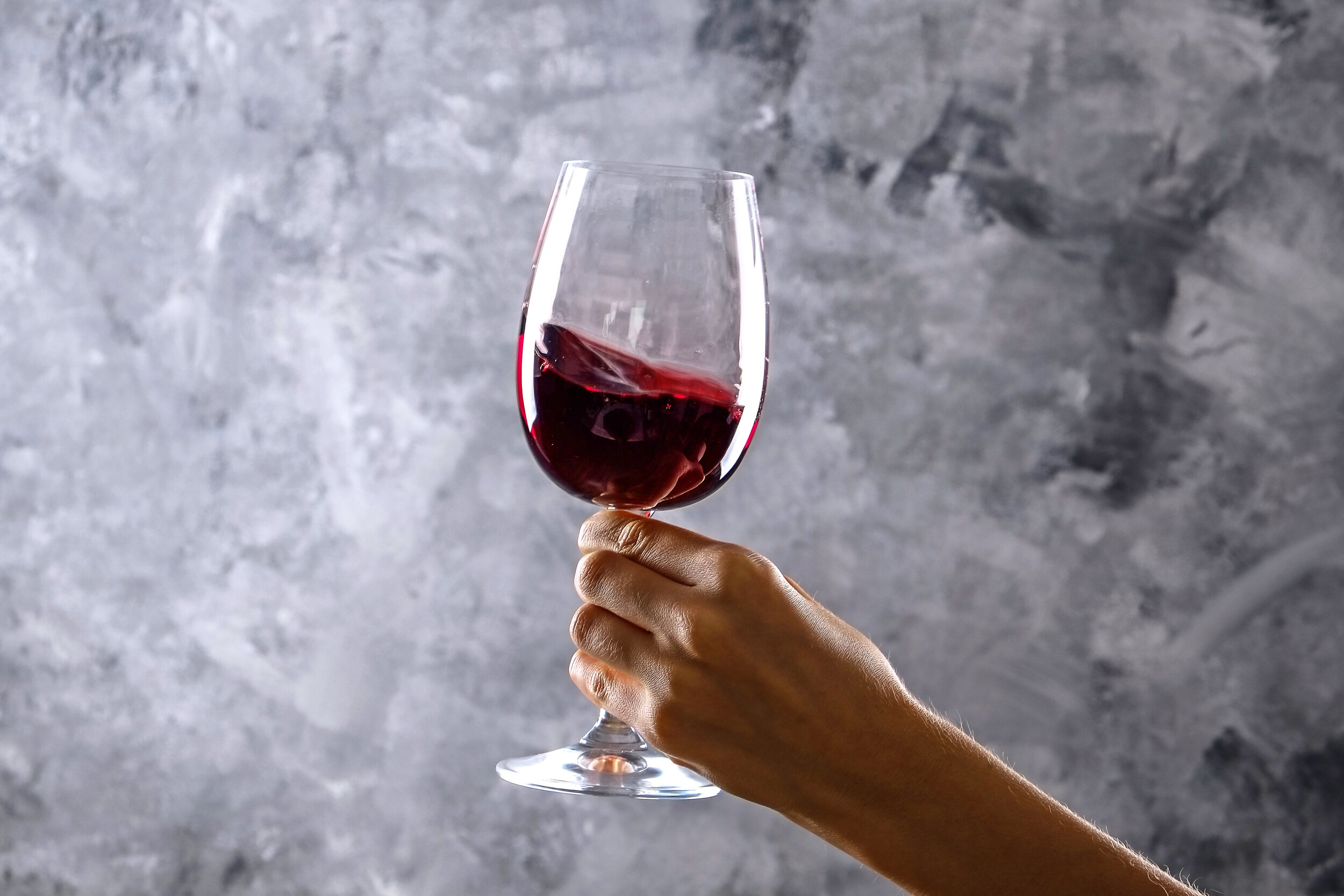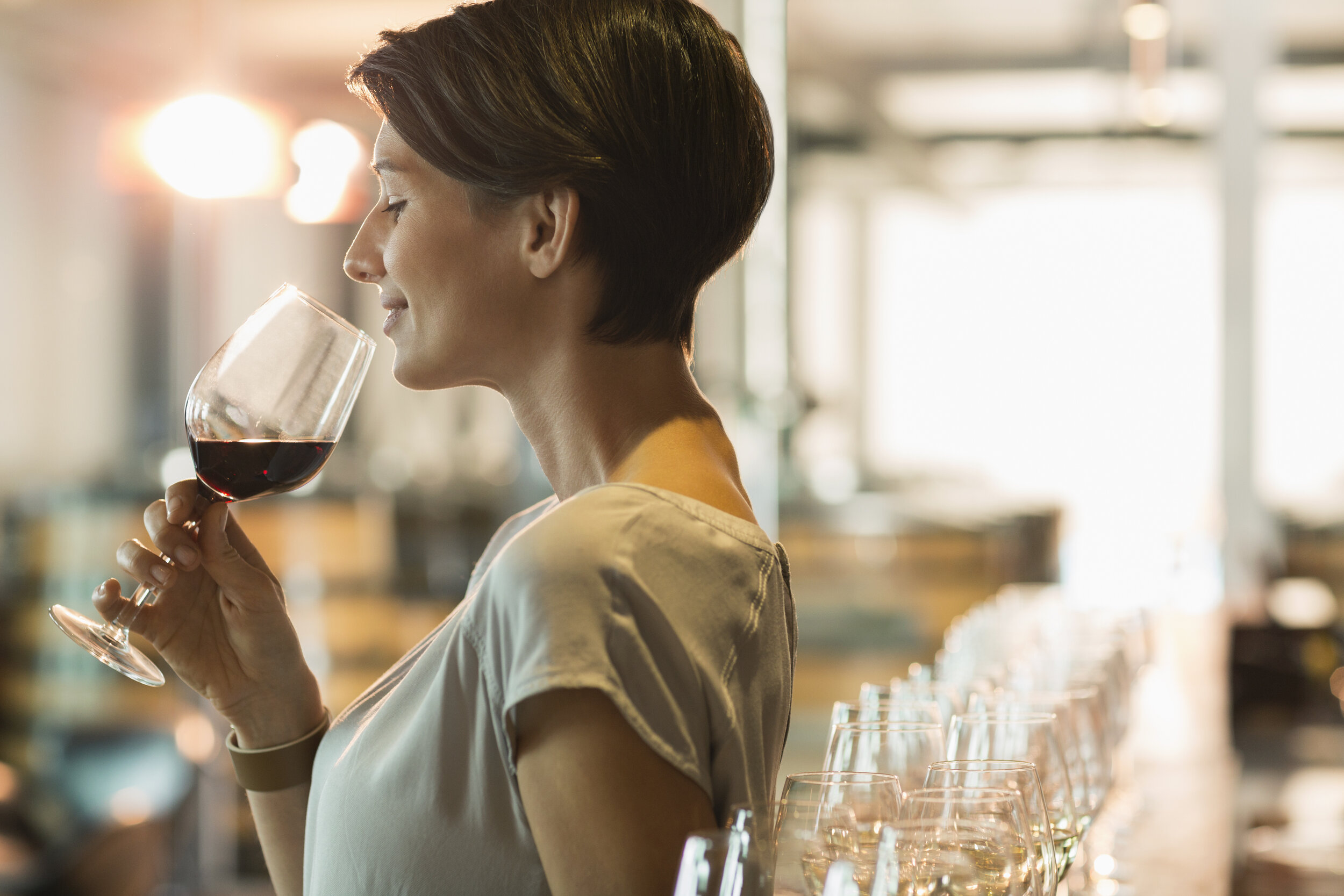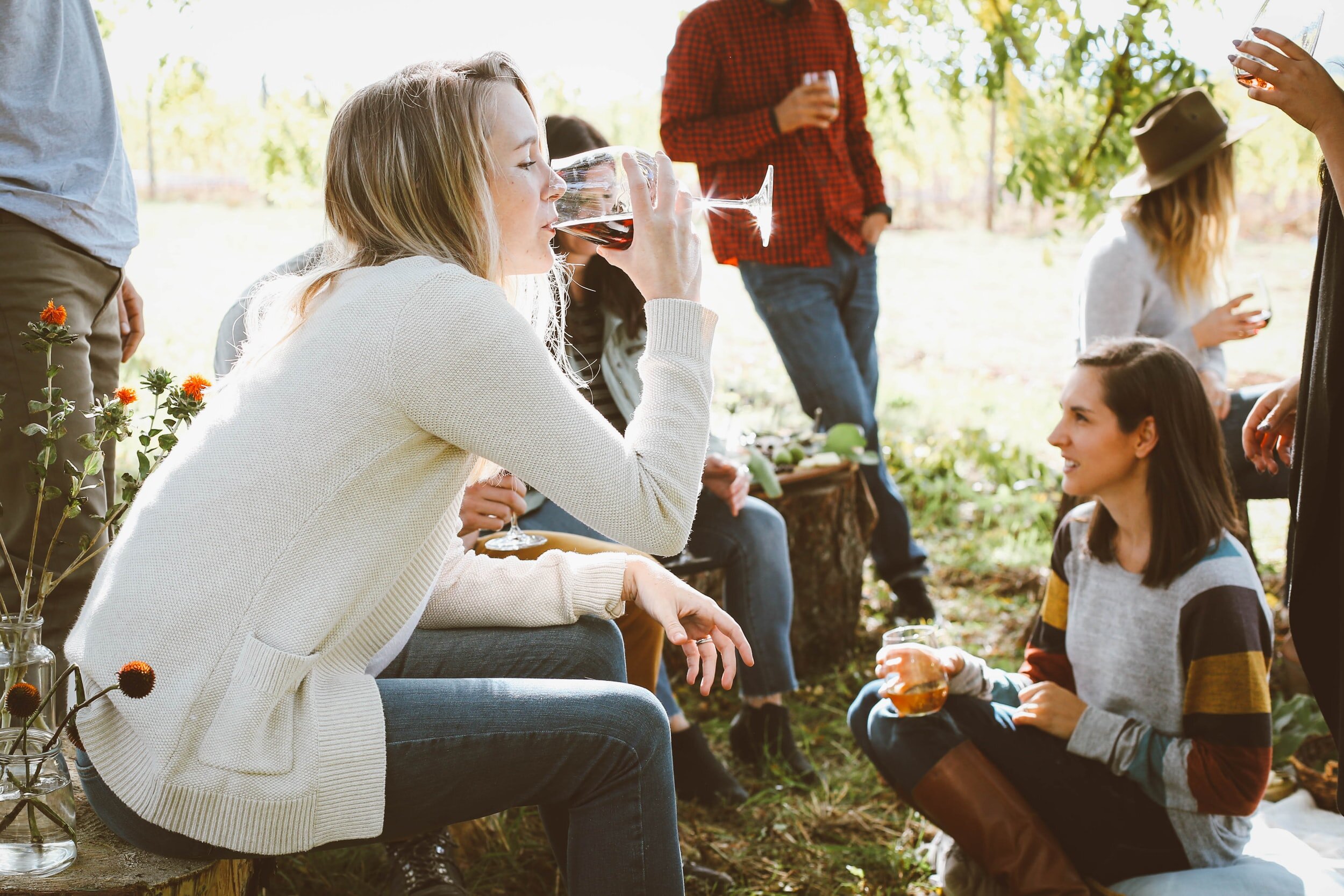The Essential Guide to Wine
There is no right or wrong way to drink wine. It's as simple as that: do you like what you're drinking or don't you like what you're drinking? However, there is a systematic method of tasting wine that exposes more about the wine in your glass even before you start drinking. We recognize that this way of tasting can be scary, so we'll break it down for you, leaving you feeling comfortable and confident if you choose to use it.
Look at the Wine
The first stage in a wine degustation is to look at the wine before you taste. The wine's color can tell you a lot about your wine, therefore hold your glass in a white surface for a clearer view of the color.
The colour of a wine is caused by contact with the skins of grapes after the grapes have been juiced. The longer the wine is in touch with the skins, the more colour the skins will impart on the wine. The skin of a grape transmits its own properties, much like the zest of an orange has a purer orange flavour or the peel of an apple contains more fibre than the meat.
White Wine
If the wine is very light and bright, almost transparent, or is the yellow deep and full, almost straw-colored? Light and bright white wines that can be seen through have had little touch with the grape skins and are usually crisp and pleasant, like lemonade on a hot summer day. If the wine's yellow is richer and deeper in colour, this is usually a positive indication that it was aged in an oak barrel.
Red Wine
The same steps apply when analyzing a red as they do when examining a white. If the wine is light red, even approaching pink, it should taste light and lively. The lighter the red of a wine, the less likely it was matured in wood. As the color of the red wine darkens, nearing maroon and purple, it becomes bolder and richer.
Do the swirl
Now that we have mastered observing and comprehending the color of the wine, time to swirl.
The next stage in wine tasting is to swirl and stir the wine. Oxygen is both a friend and a foe to wine—a frenemy. If you leave a wine in a glass exposed to oxygen for too long, say overnight, the oxygen will completely oxidise the wine, leaving it with a disagreeable flavour that can be flat and even bitter.
Sniff to smell the aroma
When you smell a wine, you're prepping your brain for the wine you're about to taste. The way our brain interprets flavor is greatly influenced by our sense of smell. Hold your nose and then put a strawberry in your mouth and start chewing to get a better idea of how profound it is. Release your nose half way through chewing. You'll realize straight away how much more you truly taste when you have your senses of scent.
Sip, sip hooray!
It's time to taste your wine after you've looked at it, swirled it, and scented it. The key aim is to let the wine linger in your mouth for a few moments so you may reflect on it. Talk about the wine and be confident in your opinion if you're tasting with others. There are no right or wrong responses, so don't be afraid if someone has a different taste than you.
Now that we have come to the end, just enjoy your wine and forget to whine. Pop, Fizz and Clink!
Here are some wine related topics you can check out:
History of Alcohol
Find the best wine the world has to offer
The Art of Wine Making by LCBO
Crash course in wine tasting
Basic Rules for Wine Pairing
Busting Myths and Revealing Facts





